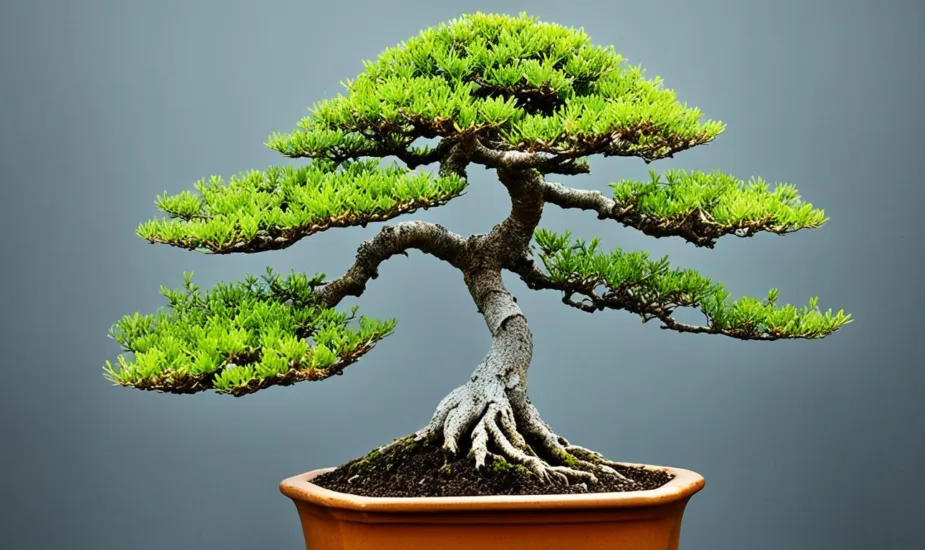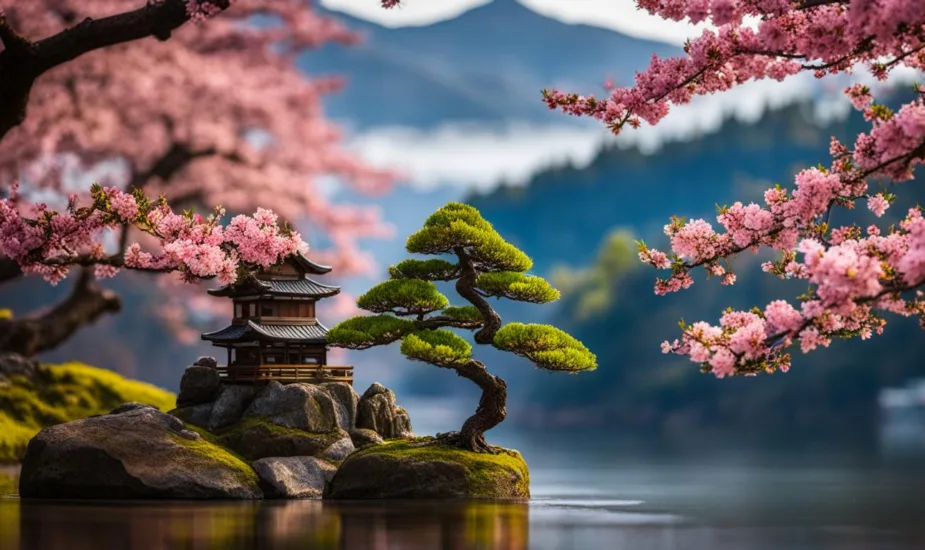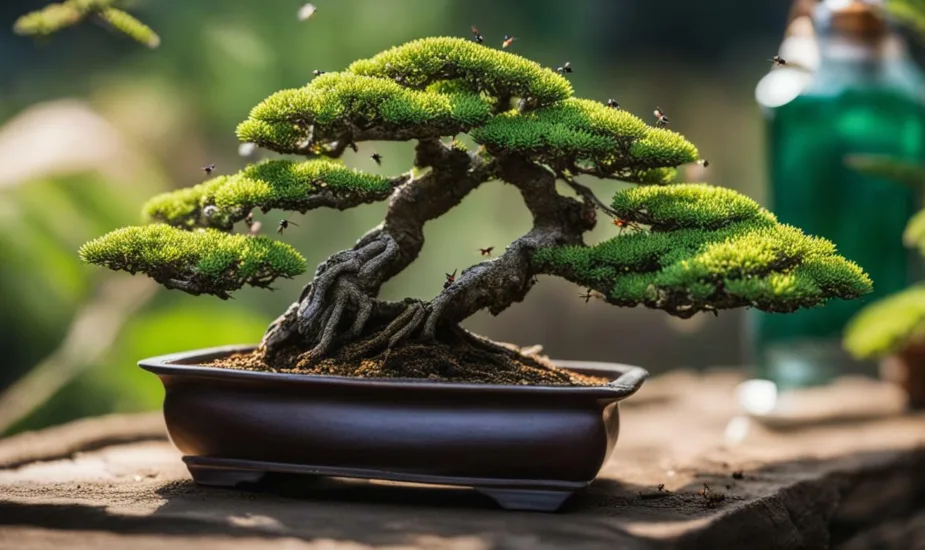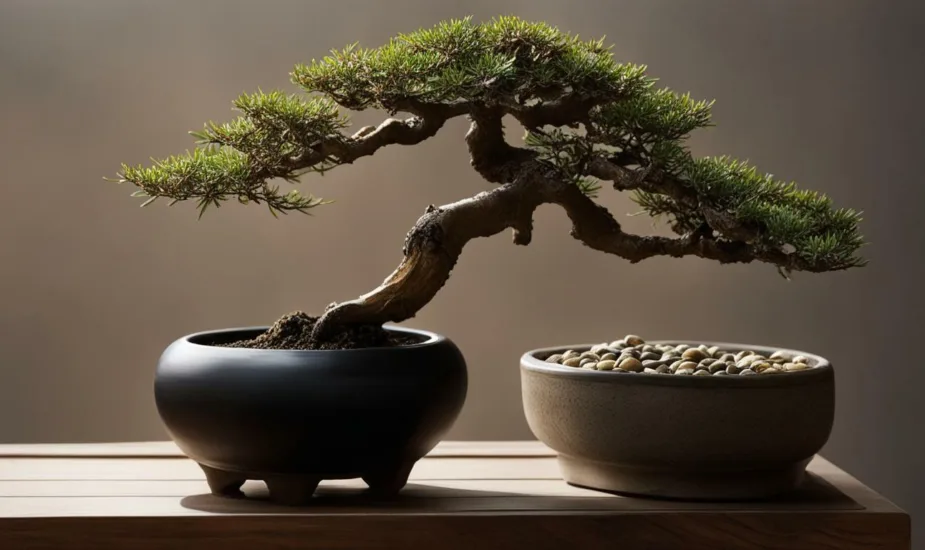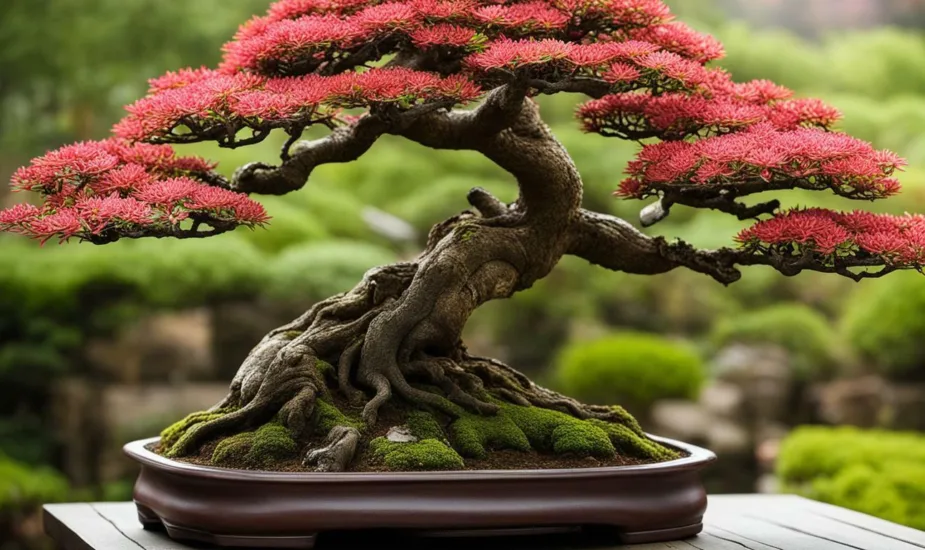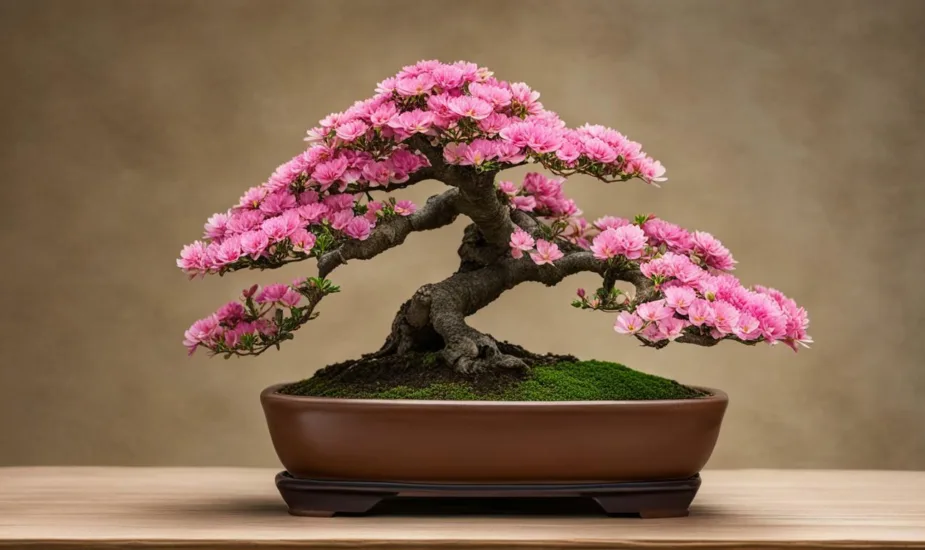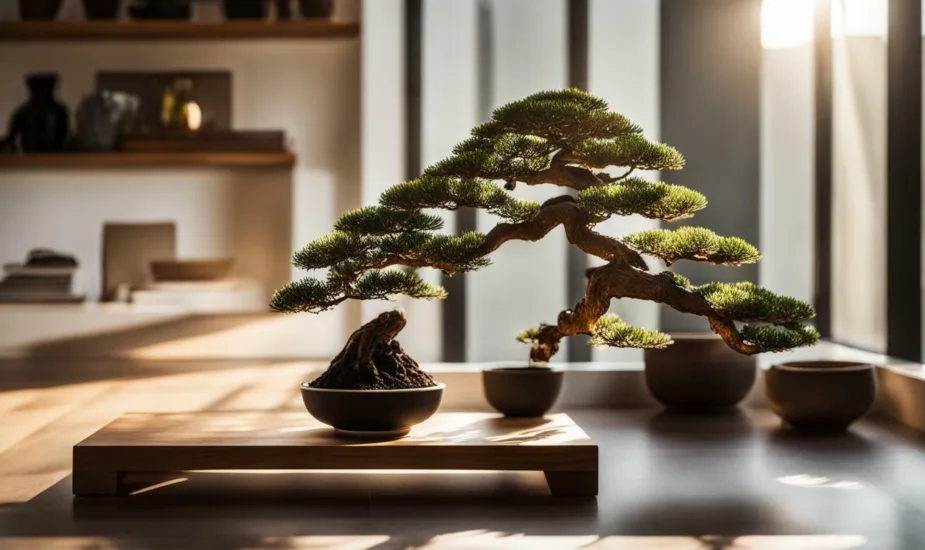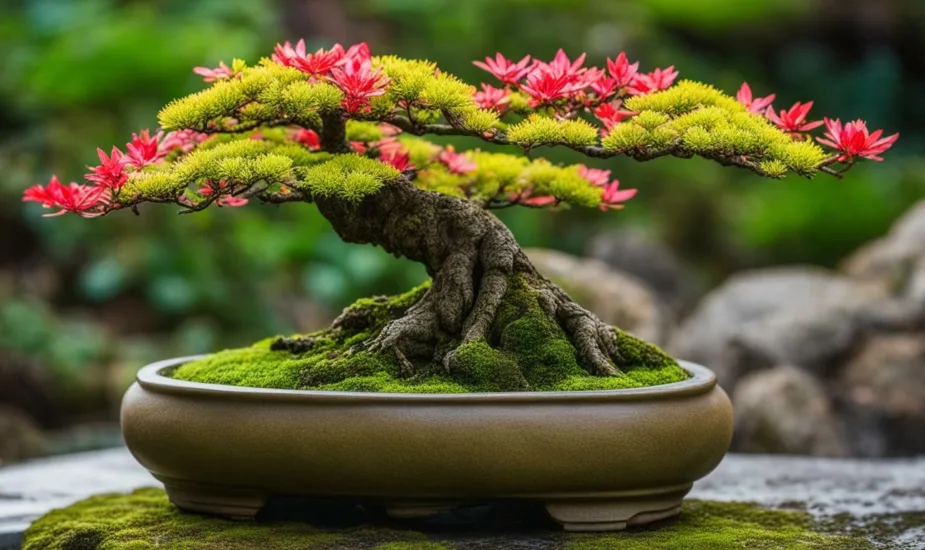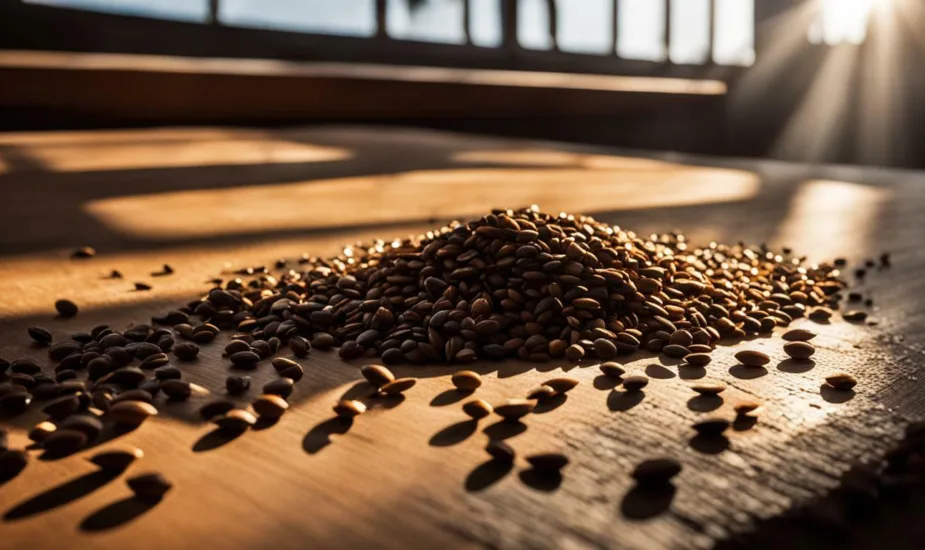From Novice to Expert: Mastering Bonsai Tree Care

Introduction to Bonsai Trees
Welcome to the enchanting world of bonsai trees! In this article, I will guide you through the art of bonsai tree care and help you become a master in nurturing these miniature wonders. Let’s begin by exploring what bonsai actually is, the fascination it holds, and the benefits of growing bonsai trees.
What is Bonsai?
Bonsai, originating from Japan, is the art of growing and nurturing trees in miniature form. The word “bonsai” translates to “planted in a container” in Japanese. Bonsai trees are meticulously cultivated to mimic the shape and scale of full-sized trees, encapsulating the beauty and essence of nature in a small, artistic display.
Bonsai trees are not mere houseplants; they are living pieces of art that require careful attention and care. By practicing bonsai tree care techniques, you can shape and nurture these tiny trees, creating a captivating representation of nature in your own home or garden.
The Fascination with Bonsai Trees
The art of bonsai has captivated people for centuries, and its allure continues to grow. The fascination with bonsai lies in its ability to capture the essence of nature in a compact and visually stunning form. Each bonsai tree tells a story, evokes emotions, and provides a sense of tranquility and harmony.
The process of shaping and pruning bonsai trees is akin to sculpting, allowing individuals to express their creativity and create living works of art. Bonsai trees can be a source of inspiration, meditation, and reflection, providing a connection with nature in our increasingly fast-paced lives.
Benefits of Growing Bonsai Trees
Growing and caring for bonsai trees offers a host of benefits beyond their aesthetic appeal. Here are some key advantages of nurturing these miniature trees:
- Stress Relief: Engaging in the art of bonsai tree care can be a therapeutic and calming experience. The act of tending to these living creations allows you to immerse yourself in a mindful practice, reducing stress and promoting relaxation.
- Sense of Accomplishment: Nurturing a bonsai tree from its early stages to a fully developed masterpiece is a rewarding journey. Witnessing the growth and progress of your bonsai tree can instill a sense of accomplishment and pride.
- Connection with Nature: Bonsai trees bring nature into your living space, providing a sense of tranquility and a connection to the natural world. They serve as a reminder of the beauty and resilience of nature in our daily lives.
- Indoor and Outdoor Options: Bonsai trees can be cultivated both indoors and outdoors, depending on the species and your specific environment. Indoor bonsai trees offer the opportunity to bring nature into your home, while outdoor bonsai trees can enhance the beauty of your garden or patio.
To get started on your bonsai journey, it’s important to choose the right bonsai tree species that suits your climate, lifestyle, and level of experience. Our article on beginner bonsai trees can provide valuable insights to help you make an informed decision.
In the next sections, we will delve into the basics of bonsai tree care, including choosing the right tree, understanding its needs, and the essential tools required for nurturing your bonsai tree. Let’s embark on this exciting adventure together!
Bonsai Tree Care Basics
When it comes to bonsai tree care, understanding the fundamentals is essential for maintaining the health and beauty of these miniature trees. In this section, we will explore the basics of caring for bonsai trees, including choosing the right bonsai tree, understanding bonsai tree needs, and essential tools for bonsai tree care.
Choosing the Right Bonsai Tree
Selecting the right bonsai tree is the first step in your bonsai journey. Consider your level of experience, available time, and the environment in which you plan to keep the bonsai. There are various bonsai tree species to choose from, each with its own unique characteristics and care requirements. If you are a beginner, it is advisable to start with beginner bonsai trees that are more forgiving and easier to care for.
Indoor and outdoor bonsai trees have different care needs. Indoor bonsai trees are generally more suited for controlled environments such as homes or offices. They require adequate light and regular humidity levels. On the other hand, outdoor bonsai trees thrive in natural conditions and require exposure to sunlight and seasonal changes. Consider the specific care requirements of the bonsai tree species you choose. For more information, you can visit our article on indoor bonsai trees and outdoor bonsai trees.
When purchasing a bonsai tree, it’s important to choose a reputable bonsai tree nursery. They can provide guidance on suitable tree species, offer healthy and well-maintained trees, and provide valuable advice on care and maintenance.
Understanding Bonsai Tree Needs
To provide proper care for your bonsai tree, it’s crucial to understand its specific needs. Bonsai trees require attention to factors such as light, water, temperature, and humidity. Research the specific care requirements for the bonsai tree species you have chosen.
Light is essential for the growth and development of bonsai trees. Most bonsai trees require direct or indirect sunlight for a minimum of four hours a day. However, the amount of light needed may vary depending on the species. Adjust the placement of your bonsai tree accordingly to ensure it receives the appropriate amount of light.
Watering is another critical aspect of bonsai tree care. The watering needs of bonsai trees vary depending on factors such as tree species, pot size, and environmental conditions. It’s crucial to strike a balance between under-watering and over-watering. Avoid letting the soil dry out completely between waterings, as this can lead to root damage. On the other hand, over-watering can cause root rot. Regularly check the moisture level of the soil and water your bonsai tree when needed. Different species may have specific watering preferences, so it’s important to research the needs of your tree.
Essential Tools for Bonsai Tree Care
To properly care for your bonsai tree, it’s important to have the right tools at your disposal. These tools will help you perform tasks such as pruning, wiring, repotting, and maintaining the overall health of your bonsai tree.
Here are some essential tools for bonsai tree care:
| Tool | Purpose |
|---|---|
| Pruning Shears | Used for precise pruning and trimming of branches and foliage. |
| Concave Branch Cutters | Designed to make clean cuts close to the trunk or main branches. |
| Root Rakes | Used for gently untangling and combing the roots during repotting. |
| Wire Cutters | Essential for cutting and removing wire used for shaping and training the branches. |
| Bonsai Soil Scoop | Helps in filling pots with bonsai soil during repotting. |
| Watering Can | Provides a controlled flow of water for watering the bonsai tree without disturbing the soil. |
Investing in high-quality tools will make your bonsai tree care tasks more efficient and effective. Take proper care of your tools by cleaning and storing them appropriately to ensure their longevity.
By understanding the basics of bonsai tree care, including choosing the right bonsai tree, understanding its needs, and having the essential tools at hand, you’ll be well on your way to mastering the art of caring for these exquisite miniature trees.
Watering and Moisture Management
When it comes to bonsai tree care, proper watering and moisture management are essential for the health and vitality of your miniature tree. The unique nature of bonsai trees requires a delicate balance of water to ensure their survival. In this section, I will discuss the importance of proper watering, various watering techniques for bonsai trees, and how to manage humidity and moisture levels effectively.
The Importance of Proper Watering
Watering is one of the most critical aspects of bonsai tree care. Proper watering ensures that your bonsai tree receives the right amount of moisture needed for its growth and development. Underwatering can cause the tree to wilt and become weak, while overwatering can lead to root rot and other issues. It’s crucial to find the right balance and provide your bonsai tree with the appropriate amount of water to keep it healthy.
Watering Techniques for Bonsai Trees
When watering your bonsai tree, it’s important to remember that the smaller size of the container requires more frequent watering compared to traditional plants. A good rule of thumb is to water your bonsai tree when the topsoil starts to feel slightly dry. However, it’s crucial to avoid watering on a strict schedule as it may not accurately reflect the tree’s actual moisture needs.
There are several effective watering techniques for bonsai trees, including:
- Top watering: This involves pouring water gently over the soil until it drains out from the drainage holes. It allows the water to penetrate the entire root system and provides thorough hydration.
- Submerging: Submerging the entire bonsai pot in water for a few minutes allows the roots to absorb moisture from the bottom up. This technique ensures deep hydration and encourages healthy root development.
- Misting: Misting the foliage of your bonsai tree can help increase humidity levels, especially in dry indoor environments. However, misting alone should not be relied upon as the primary method of watering.
Remember to adjust your watering frequency based on factors such as the specific bonsai tree species, the season, and the environmental conditions. For more information on choosing the right bonsai tree for your needs, check out our article on bonsai tree species.
Managing Humidity and Moisture Levels
In addition to proper watering techniques, managing humidity and moisture levels is crucial for the overall well-being of your bonsai tree. Bonsai trees require a slightly higher humidity level than regular potted plants. To maintain optimal humidity, you can use a humidity tray filled with water or place your bonsai tree in a humidity-controlled environment, such as a greenhouse or a room with a humidifier.
It’s also important to note that different bonsai tree species have varying moisture requirements. Some species thrive in a more arid environment, while others prefer higher humidity levels. Understanding the specific needs of your bonsai tree will help you provide the ideal moisture conditions for its growth.
By mastering the art of proper watering and moisture management, you are taking a significant step towards becoming an expert in bonsai tree care. Remember to consider the unique needs of your bonsai tree, adjust your watering techniques accordingly, and monitor humidity levels to ensure the health and vitality of your miniature masterpiece. For more information on caring for bonsai trees, check out our article on beginner bonsai trees.
Pruning and Shaping
Pruning and shaping are essential practices in bonsai tree care that help maintain the desired size, form, and aesthetic appeal of the tree. Proper pruning techniques not only contribute to the overall health of the bonsai tree but also play a crucial role in achieving the desired artistic vision.
Why Pruning is Crucial for Bonsai Trees
Pruning is a fundamental aspect of bonsai tree care, and it serves multiple purposes. Firstly, pruning helps to control the size and shape of the tree, keeping it in proportion to the container and creating a harmonious balance. By selectively removing branches and foliage, you can create a more compact and visually appealing bonsai.
Pruning also promotes the development of finer branching and foliage, which is highly desirable in bonsai aesthetics. Regular pruning encourages the growth of new shoots and helps to maintain the overall health and vitality of the tree. Additionally, pruning allows for better air circulation and light penetration, reducing the risk of diseases and promoting optimal growth.
Techniques for Pruning Bonsai Trees
When pruning a bonsai tree, it’s crucial to use the right techniques to ensure the best results. Here are some commonly used pruning techniques:
- Maintenance Pruning: This involves the regular removal of small branches, shoots, and foliage to maintain the desired shape and size of the bonsai tree. Maintenance pruning is typically done during the growing season to encourage new growth and maintain the tree’s aesthetic appeal.
- Structural Pruning: Structural pruning focuses on developing the primary branches and the overall framework of the bonsai tree. This technique is often employed during the initial stages of bonsai training to establish the tree’s basic structure and shape. It involves removing unwanted branches or those that detract from the desired design.
- Pinching: Pinching is a technique used to control the growth and shape of young shoots. By gently pinching off the tips of new growth, you can encourage the development of more compact and dense foliage pads. Pinching is particularly effective for species that tend to produce long and leggy growth.
Shaping and Wiring Bonsai Trees
In addition to pruning, shaping and wiring are crucial techniques used in bonsai tree care to achieve specific artistic forms and styles. Shaping involves the careful manipulation of branches and foliage to create the desired shape and movement, while wiring is used to position and guide branches into the desired position.
When shaping a bonsai tree, it’s important to have a clear vision in mind and work gradually towards the desired form. Wiring is typically done during the tree’s dormant period, and it should be done carefully to avoid damaging the tree or causing wire marks. The wire should be applied in a way that provides support while allowing the branches to grow and thicken naturally. It’s important to monitor the tree closely to ensure that the wire does not cut into the bark.
By combining pruning, shaping, and wiring techniques, bonsai enthusiasts can transform their trees into living works of art. However, it’s important to remember that pruning and shaping should be done with caution and in accordance with the specific requirements of the bonsai tree species. For more information on different bonsai tree species, check out our article on bonsai tree species.
In the next section, we will explore another crucial aspect of bonsai tree care: soil and fertilizer. Understanding the ideal soil composition and the importance of proper fertilization is key to maintaining the health and vitality of your bonsai tree.
Soil and Fertilizer
Taking care of the soil and providing adequate nutrients are essential aspects of bonsai tree care. Proper soil composition, fertilization, and repotting play a significant role in the health and development of your bonsai tree.
Ideal Soil Composition for Bonsai Trees
Choosing the right soil composition is crucial for the overall well-being of your bonsai tree. The ideal soil should provide proper drainage while retaining enough moisture for the tree’s roots. A well-draining soil ensures that excess water doesn’t accumulate, which can lead to root rot and other issues.
The composition of bonsai soil generally consists of three main components: organic matter, inorganic matter, and grit. The organic matter helps retain moisture, while the inorganic matter provides stability and drainage. Grit, such as coarse sand or gravel, improves drainage and prevents soil compaction.
Here is a basic guide to the ideal soil composition for bonsai trees:
| Component | Percentage |
|---|---|
| Organic Matter (such as peat moss or compost) | 30% |
| Inorganic Matter (such as Akadama or bonsai soil mix) | 40% |
| Grit (such as coarse sand or gravel) | 30% |
It’s important to note that different bonsai tree species may have specific soil requirements. Research the specific needs of your bonsai tree species to ensure the soil composition is suitable. For more information on choosing the right bonsai tree, check out our article on beginner bonsai trees.
Fertilizing Bonsai Trees
Fertilizing is an essential aspect of bonsai tree care as it provides the necessary nutrients for healthy growth and development. Bonsai trees are grown in small containers, which limits the availability of nutrients in the soil. Therefore, regular fertilization is crucial to replenish the nutrients that may become depleted over time.
When selecting a fertilizer for your bonsai tree, it’s important to choose one specifically formulated for bonsai or other container-grown plants. These fertilizers typically have a balanced ratio of nitrogen, phosphorus, and potassium, commonly represented as NPK on fertilizer labels. The NPK ratio indicates the relative amounts of each nutrient.
For bonsai trees, a balanced NPK ratio, such as 10-10-10 or 14-14-14, is generally suitable for most species. However, it’s important to keep in mind that different species may have specific nutritional requirements. Consult a bonsai expert or refer to specific guidelines for your bonsai tree species.
To provide nutrients to your bonsai tree, follow the instructions on the fertilizer packaging. Typically, fertilization is done during the growing season, from spring to summer, and reduced or stopped during the dormant period in winter.
Repotting Bonsai Trees
Repotting is an essential part of bonsai tree care that helps maintain the health and vigor of your tree. Over time, the soil in the bonsai pot can become compacted, leading to poor drainage and restricted root growth. Repotting allows you to refresh the soil, prune the roots, and provide a larger space for the roots to grow.
The frequency of repotting depends on the growth rate of your bonsai tree and the size of the container. As a general guideline, deciduous trees are usually repotted every two to three years, while coniferous trees can be repotted every three to five years. However, it’s important to assess the root system carefully before deciding to repot.
When repotting, use a bonsai soil mix similar to the ideal soil composition mentioned earlier. Gently remove the tree from its pot, prune any circling or excessively long roots, and place it in a slightly larger pot with fresh soil. Be careful not to disturb the root system excessively.
Remember to water the newly repotted bonsai tree thoroughly and provide appropriate care during the recovery period. For more information on caring for outdoor bonsai trees, refer to our article on outdoor bonsai trees.
By understanding and implementing proper soil composition, fertilization, and repotting techniques, you can provide the necessary nutrients and optimal growing conditions for your bonsai tree. With consistent care and attention, your bonsai tree will thrive and bring you joy for years to come.
Dealing with Common Bonsai Tree Issues
Caring for bonsai trees requires attention to detail, as they are susceptible to various issues. Being aware of and addressing these common problems promptly can help ensure the health and vitality of your bonsai tree. Here are some common issues you may encounter and how to deal with them:
Pests and Diseases
Pests and diseases can pose a threat to the well-being of your bonsai tree. Common pests that may affect bonsai trees include aphids, spider mites, and scale insects. These tiny organisms can cause damage to the leaves, stems, and overall health of the tree.
To combat pests, it’s important to regularly inspect your bonsai tree for any signs of infestation. If you spot pests, you can try using organic insecticidal soaps or oils. Make sure to follow the instructions provided by the manufacturer and avoid using harsh chemicals that may harm the tree.
Diseases such as fungal infections and bacterial diseases can also impact bonsai trees. Maintaining proper hygiene, such as removing dead leaves and sterilizing tools, can help prevent the spread of diseases. If you notice any signs of infection, consult a plant specialist or a local bonsai tree nursery for guidance on suitable treatments.
Root Rot and Overwatering
Overwatering is a common mistake made when caring for bonsai trees. Excessive watering can lead to root rot and other related issues. When the roots are constantly saturated, they can’t absorb oxygen properly, causing them to decay.
To prevent root rot, ensure that your bonsai tree is potted in well-draining soil. It’s essential to water your bonsai tree only when the top layer of soil feels slightly dry to the touch. Avoid watering on a fixed schedule and instead assess the moisture needs of the tree individually.
If you suspect root rot, carefully remove the tree from its pot and inspect the roots. Healthy roots should be firm and white, while decaying roots will appear brown, mushy, or foul-smelling. Trim away any affected roots and repot the tree in fresh, well-draining soil. Adjust your watering practices to prevent future occurrences.
Sunburn and Underwatering
While bonsai trees require sufficient sunlight, sunburn can occur if they are exposed to intense sunlight for extended periods. Sunburn is characterized by browning or yellowing of leaves and patches of dry, dead tissue.
To protect your bonsai tree from sunburn, provide it with dappled or filtered sunlight, especially during the hottest parts of the day. If you notice signs of sunburn, move the tree to a more shaded area and gradually reintroduce it to direct sunlight.
On the other hand, underwatering can also be detrimental to the health of your bonsai tree. Signs of underwatering include wilted or dry leaves, as well as slow growth. To prevent this, check the moisture level of the soil regularly and adjust your watering frequency accordingly.
Maintaining a balance between proper light exposure and watering practices is crucial for the overall well-being of your bonsai tree. By being attentive to its needs, you can address these common issues and ensure the long-term health and beauty of your bonsai tree. For more information on bonsai tree care, check out our article on beginner bonsai trees.
Taking Your Bonsai Tree Care to the Next Level
Now that you have a solid foundation in bonsai tree care, it’s time to explore advanced techniques and continue your journey in mastering the art of bonsai. By delving deeper into the intricacies of bonsai tree care, you can refine your skills and create even more impressive and captivating bonsai trees.
Advanced Techniques in Bonsai Tree Care
As you progress in your bonsai journey, you can experiment with advanced techniques to enhance the beauty and health of your bonsai trees. Some of these techniques include:
- Air Layering: This technique allows you to propagate new bonsai trees from existing ones by encouraging the growth of roots on a branch while it is still attached to the parent tree. Air layering can be a rewarding way to expand your bonsai collection and create unique specimens.
- Grafting: Grafting involves joining a branch or scion from one bonsai tree onto the trunk or root system of another. This technique allows you to introduce desirable traits or create more compact and aesthetically pleasing bonsai trees.
- Deadwood Techniques: Deadwood techniques involve intentionally preserving or creating dead or aged wood on a bonsai tree to mimic the effects of natural weathering. These techniques can add character and a sense of history to your bonsai trees.
Remember, advanced techniques require a deeper understanding of the specific needs of your bonsai tree species. Refer to our article on bonsai tree species for more information on the unique characteristics of different bonsai tree species.
Continuous Learning and Experimentation
Bonsai is an art that is constantly evolving, and there is always something new to learn and discover. To continue improving your bonsai tree care skills, it’s essential to engage in continuous learning and experimentation. Stay curious and explore different sources of information, such as books, online forums, and workshops. Interacting with other bonsai enthusiasts can provide valuable insights and inspiration.
By experimenting with different techniques, styling approaches, and tree species, you can push the boundaries of your bonsai tree care knowledge and create truly unique and remarkable bonsai trees. Don’t be afraid to take risks and embrace the learning process.
Enjoying the Art of Bonsai
Above all, bonsai is an art form that brings joy and fulfillment. As you progress in your bonsai tree care journey, take the time to appreciate the beauty and tranquility that bonsai trees bring to your life. Admire the intricate details of your trees, observe how they change with the seasons, and find solace in the process of nurturing and shaping them.
Remember, the journey of bonsai tree care is a lifelong pursuit. Enjoy the process, celebrate your successes, and learn from your challenges. With dedication, patience, and a passion for the art, you can continue to grow as a bonsai enthusiast and create stunning works of living art.
Keep up the great work in caring for your bonsai trees and don’t forget to explore other aspects of bonsai, such as indoor bonsai trees, outdoor bonsai trees, and beginner bonsai trees. Happy bonsai gardening!
 Little Garden Tips
Little Garden Tips




